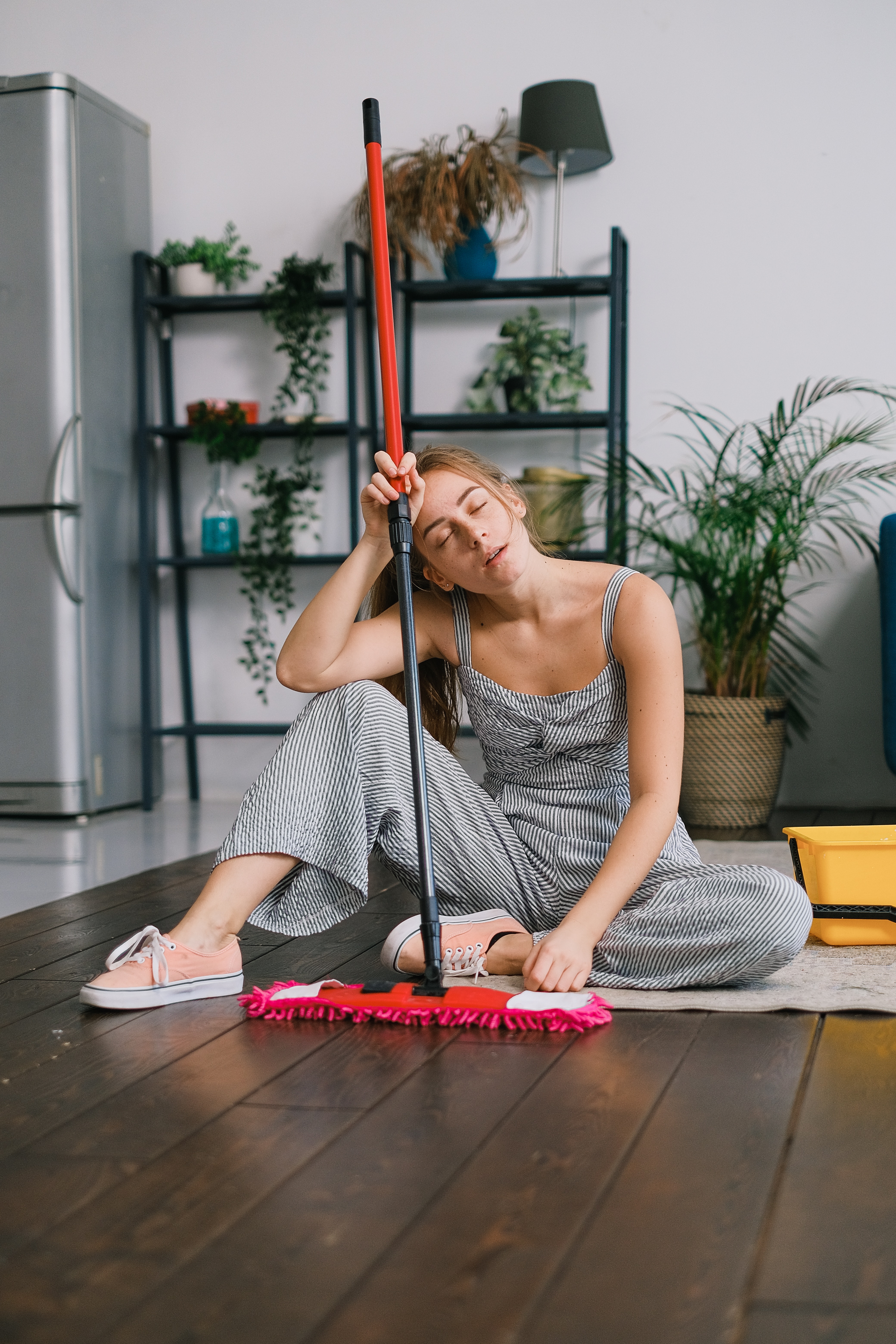How often you should do yoga depends on:
- How fit you are;
- How much yoga you can fit into your schedule; and
- Your goals.
As a beginner, you can start off by doing yoga 2 or 3 times a week and work up to 5, if it feels right. And over time, depending on your needs and goals, the frequency with which you do yoga may change.
Whether you’re just starting your yoga journey or you’ve been walking this road for a while, it’s all about finding the balance that works for you and understanding that this balance might shift.
How Often Should I Practice Yoga To See Results?
Whether you’re learning a language, playing an instrument, or practicing yoga, regular performance will improve your ability and the associated benefits.
But how much yoga is enough? Can you do too much yoga?
Practicing once or twice a week is a good start. It will help you get used to doing yoga regularly, which is key to building on the mental, physical, and emotional benefits that yoga engenders.
Up the Ante for More Benefits
Practicing yoga as much as five or six days a week can help you experience the cumulative benefits. However, work up to this frequency gradually to avoid burning out or injuring yourself.
Note that the sessions don’t need to be intensive every time. You can take it easy once or twice a week. Taking it easy allows your body to wind down while keeping up your momentum.
So, reserve at least one day for gentler yoga or a yoga-free day to allow yourself to rest and recover. Keep listening to your body to understand how it’s changing and whether you are doing enough or too much.
At the end of your yoga session, you should be feeling relaxed and/or invigorated. If you’re crawling to the shower, something’s not working.
How Often Should Beginners Do Yoga?
We recommend that you build up the frequency with which you do yoga gradually. Start with a commitment to practice two or three times a week. Do this for a month or two and then see if you want to do more.
Often when people begin yoga, they are so excited by it that they go out and buy a lot of yoga gear and decide to practice Every Single Day.
Rather than starting with daily practice, however, two sessions per week gives your body and mind time to adjust to the changes taking place within you.
As a consequence of your new yoga practice, you might discover new physical and physiological changes, including soreness or a runny or blocked nose. You might feel tired or emotional.
Rushing into yoga doesn’t give you time to be mindful of what it’s doing for you.

After establishing a basic yoga schedule, build up comfortably. By doing more yoga sessions, you will condition your body to avoid injury and to safely enjoy the results from your future sessions, even if they become longer or more intense.
How Long Should Your Practice Be?
Doing yoga regularly is more important than how long each session is, but the length of your sessions will impact the depth of your yoga practice, how quickly you learn, and the benefits you experience.
Practicing for anything from fifteen minutes to an hour works best for most people. However, if you can only make time for a five or ten minute yoga session, that’s better than skipping practice entirely or attempting to “make up for it” with a super-long session sporadically.
Yet, longer yoga classes do have their advantages.
The Benefits of Longer Yoga Classes
If you have the time and energy, do incorporate longer classes into your yoga schedule when you can, as this can have excellent results.
For starters, research suggests that different yoga techniques may have unique health benefits. This means that a longer class could give you the space to stay in specific asanas longer, repeat the poses more often so that you can deepen their effects, or work up to more complex postures.
How does this work? Well, longer classes give your body more time to warm up, so your muscles are ready for challenging peak poses towards the second third of the class, before winding down. For instance, you may not get near a full split (hanumanasana) after a 5-minute stretch, but after 30 minutes that include ardha hanumanasanas (half monkey pose), standing splits, and other types of prep, your… uh, root chakra, will get much closer to the mat.
Finally, a longer class can also afford you some valuable cool-down time at the end. A long savasana can help you assimilate what you’ve learned or any emotions and feelings that your session evoked.
Finding The Perfect Frequency: Factors
The main factors that affect how often you should do yoga include your experience level, your fitness, when you have the most energy, how much time you have, and your goals.
Your Experience Level
With experience, you’ll understand your body and how much you can exert yourself without overdoing it. You are the best judge of how much your body can take, but it can take some time to get in tune with it.
Once you and your body get better at “speaking the same language,” you’ll understand what it’s saying and respond accordingly by increasing or decreasing the frequency, length, or intensity of your classes.
Your Fitness Level
Depending on your fitness level, increase your frequency gradually, remembering that yoga isn’t like every other kind of physical discipline or exercise. Just because your body has adapted to one kind of physical exertion, doesn’t mean that you’re immune to overdoing it with yoga.
Over-exerting yourself at the beginning puts you out of action, in which case your yoga practice frequency could be zero.
If you already exercise regularly or are physically active, you might find that you can increase your yoga frequency to as many as six or seven times a week within a month or two.
More experienced yoga practitioners often have a near-daily practice that keeps their bodies conditioned and allows them to get the most from their classes.
Your Energy Levels
To find the perfect frequency, it’s worth considering what times of day your energy levels are highest. You might find that you can do yoga more often if your sessions coincide with when your body and mind are most receptive.

For some people, this will be first thing in the morning. Others might benefit from a quick pick-me-up in the middle of the day. Or you might find that an evening wind down feels the most beneficial.
Try different times of day to explore what works best for you. And don’t be afraid to vary your yoga times day-to-day and week-to-week, according to your schedule and your needs.
Your Timetable
What gets in the way? Kids? Work? Studying?
Don’t be disheartened if you find that you can’t manage 6 sessions per week. An easy way to fit more into your busy schedule is to do yoga online. Online classes offer massive variety and the flexibility to practice yoga when and where you want.
If you feel ready to increase the frequency of your practice but your time is limited, note that yoga sessions can be shorter than ten minutes and still give you great benefits, and there’s yoga for almost any situation!
For instance, you can do yoga at your desk or while at the airport. You can also do a micropractice, such as a 5-minute wake-up routine before the day starts, or a class focusing on your shoulders or wrists that you can perform anywhere – work, home, coffeeshop.
In any case, shorter sessions of mindful practice can be more beneficial than being distracted or interrupted during longer sessions.
Your Goals
If your goal is to improve one area in particular, this will influence how often you should practice.
To build flexibility over time, don’t push it. Two or three sessions per week should be enough to see improvements in your suppleness. As you begin to feel the results of your practice for flexibility, increase how often you do yoga to daily sessions, but keep those sessions relatively short to avoid overdoing it.
If your focus is improving your mental health, more yoga sessions per week can help you ease symptoms of anxiety and depression. If you are having a particularly rough time at work, you have exams, or you’re stressed about bills, you can find comfort in stepping up the frequency of your yoga sessions. If you’re busy, keep the sessions short, lest they add onto your stressful schedule.
Trauma-sensitive yoga could help provide some peace if you’re suffering from post-traumatic stress disorder. Whether you find short, daily practices or fewer, longer sessions more comforting will be individual to you, but seek help from an instructor familiar with PTSD or a yoga therapist and take it slowly.
Building strength requires that you do yoga more frequently, so aim for 5 to 6 days per week. However, take it slowly at first to avoid injury, and remember to leave at least one rest or gentle yoga day to help your body recover.
When it comes to mindfulness, it’s beneficial to practice more frequently rather than do longer sessions. Attempting to be mindful for long stretches of time can be frustrating and demotivating. Frequent, consistent effort is likely to yield better results.
What Do I Do When I Don’t Feel Like Doing Yoga?
Even when you have a routine, we all have those days when we don’t feel like lifting a finger let alone doing a handstand. How can you motivate yourself to maintain the frequency of your practice?
It’s better to do something than to blow off a session entirely. Maintaining your practice, however short, reaffirms your commitment and helps you keep up with your yoga despite the obstacles presenting themselves at that moment.
A Pro Tip to Get Yourself on the Mat
I heard an effective trick used by a runner when motivation is your problem. The idea of going for a 30-minute run was off-putting, so rather than committing to a 30-minute run, he committed to getting into his gear. All he had to do was get out of bed, get into his sweatpants and sneakers, and he’d fulfilled his commitment.
He could return to bed, guilt-free. However, he found that by the time he’d got into his sweatpants and sneakers, he’d most likely leave the house.
And once he left the house, he’d most likely start running.
And once he’d started running, he’d most likely do 30 minutes.
Commit to getting on the mat. If you’re standing on your mat, you’ll probably find that a pose or two will follow. You might find that you’re enjoying the way yoga makes you feel again and keep going.
If not, no pressure. You gave it a few minutes.
Give yourself a break. And make that stress-and-obligation-free appointment with yourself again next time.
Don’t Let Yoga Become A Chore: Key Takeaways
Yoga is worth prioritizing, but avoid putting so much pressure on yourself that your practice becomes a chore rather than a pleasure. Yoga is all about balance, so what frequency contributes to your mental, emotional, and physical equilibrium.

Here are some key takeaways regarding yoga and frequency:
- When the time is right, increase the frequency of your yoga practice, but do so safely, without burdening your body or eclipsing your obligations. Over time, you might find that those kids, that work, and all that studying are easier to manage when you’ve done yoga.
- Keep in mind that yoga sessions don’t have to be limited to one longer class per day. If you have multiple short gaps during the day, you can use them to practice, as long as you advance gently and don’t overstretch yourself.
- While consistent practice can help us develop a habit, a fixed schedule isn’t obligatory. If you have more free time one week than another, it’s okay to increase and decrease your sessions.
- Commitment to your classes will help you make yoga a part of your lifestyle and get your body conditioned so that you can get the most from your practice.
In the end, it’s important to approach “frequency” while aware that your needs are likely to change over time and that listening to your body will tell you everything you need to know.



Comments
Existing Comments